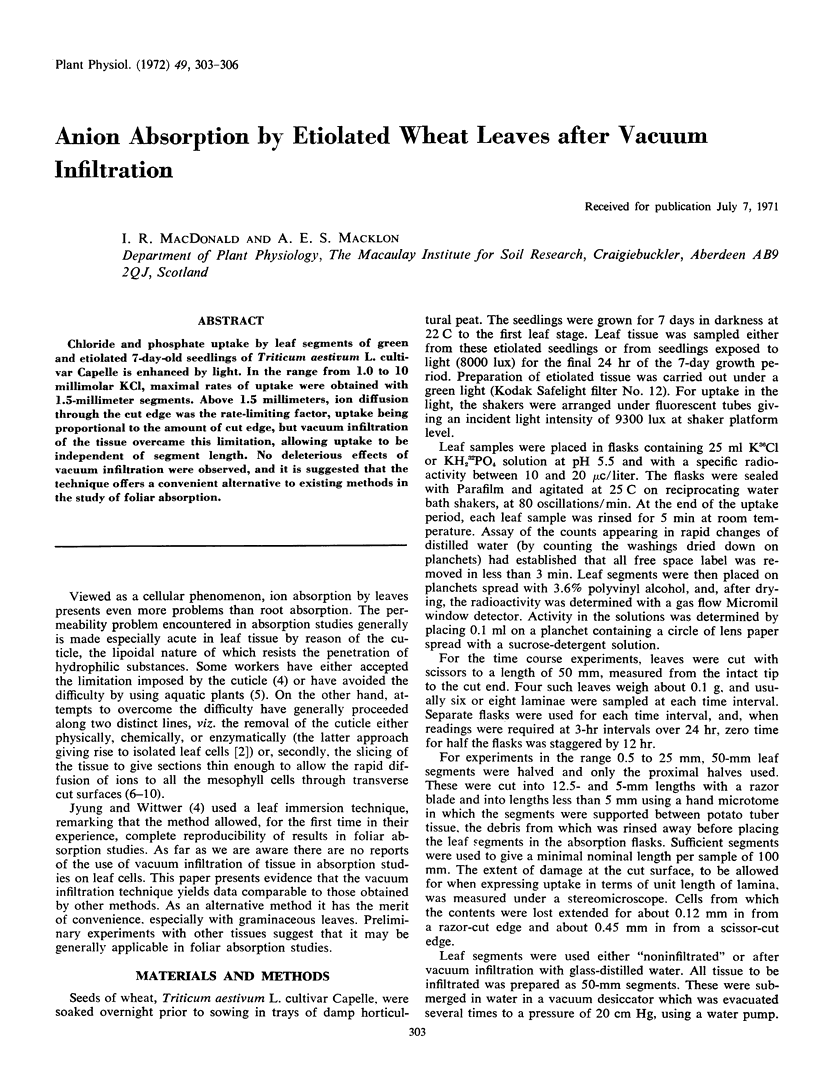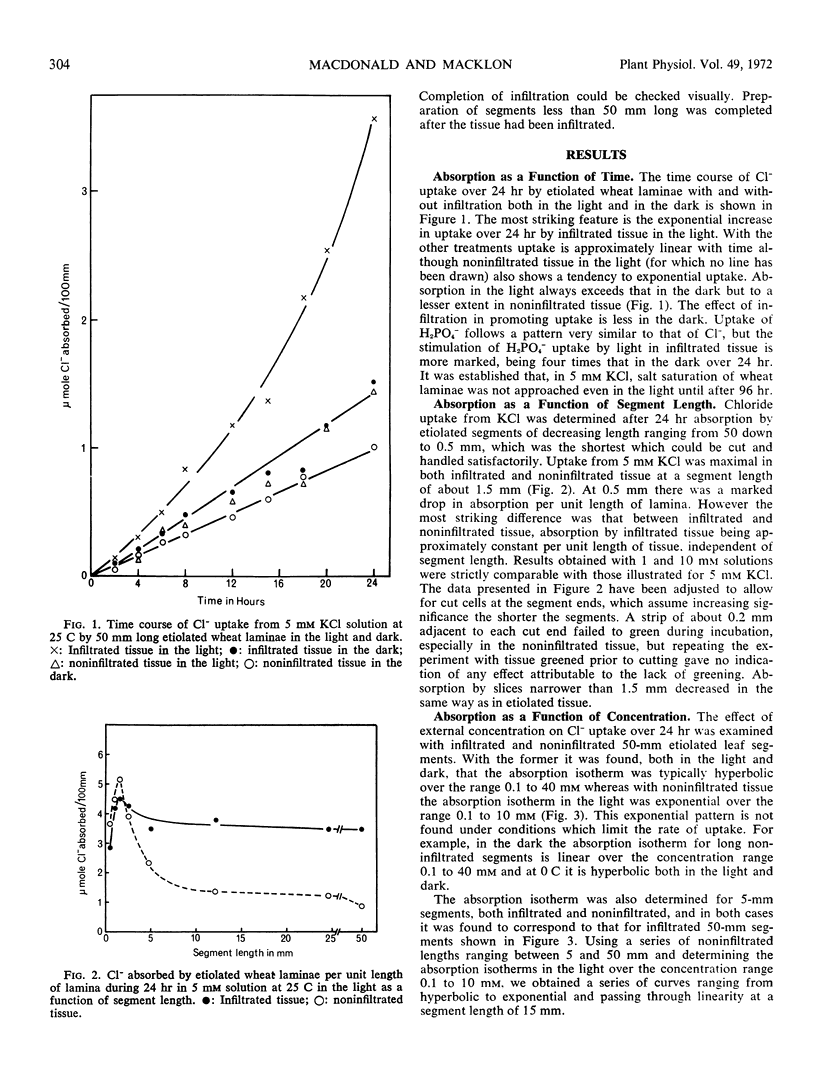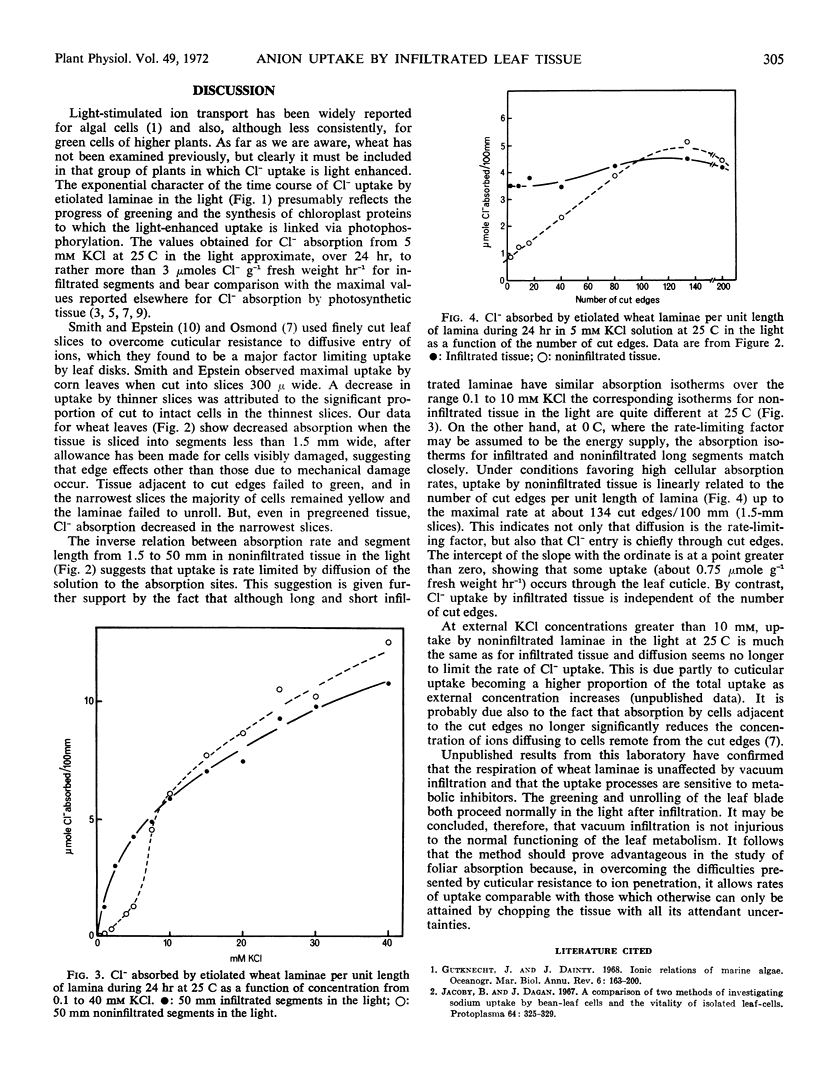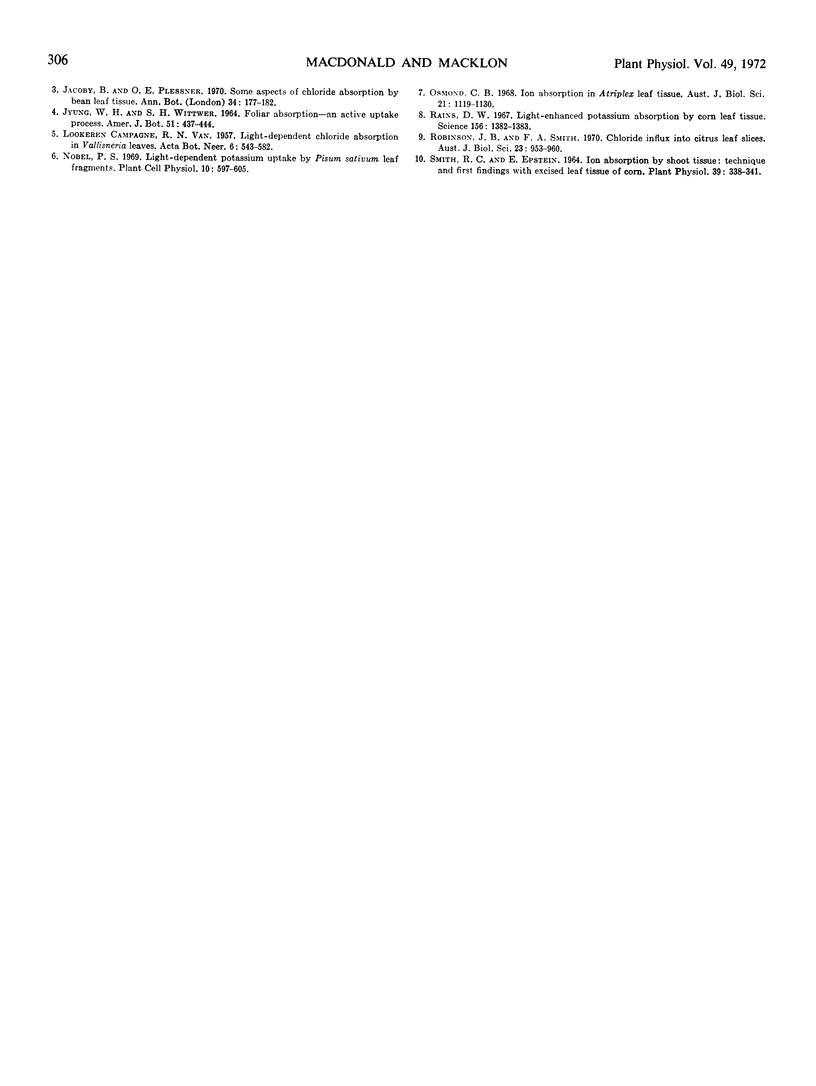Abstract
Chloride and phosphate uptake by leaf segments of green and etiolated 7-day-old seedlings of Triticum aestivum L. cultivar Capelle is enhanced by light. In the range from 1.0 to 10 millimolar KCl, maximal rates of uptake were obtained with 1.5-millimeter segments. Above 1.5 millimeters, ion diffusion through the cut edge was the rate-limiting factor, uptake being proportional to the amount of cut edge, but vacuum infiltration of the tissue overcame this limitation, allowing uptake to be independent of segment length. No deleterious effects of vacuum infiltration were observed, and it is suggested that the technique offers a convenient alternative to existing methods in the study of foliar absorption.
Full text
PDF



Selected References
These references are in PubMed. This may not be the complete list of references from this article.
- Rains D. W. Light-enhanced potassium absorption by corn leaf tissue. Science. 1967 Jun 9;156(3780):1382–1383. doi: 10.1126/science.156.3780.1382. [DOI] [PubMed] [Google Scholar]
- Smith R. C., Epstein E. Ion Absorption by Shoot Tissue: Technique and First Findings with Excised Leaf Tissue of Corn. Plant Physiol. 1964 May;39(3):338–341. doi: 10.1104/pp.39.3.338. [DOI] [PMC free article] [PubMed] [Google Scholar]


